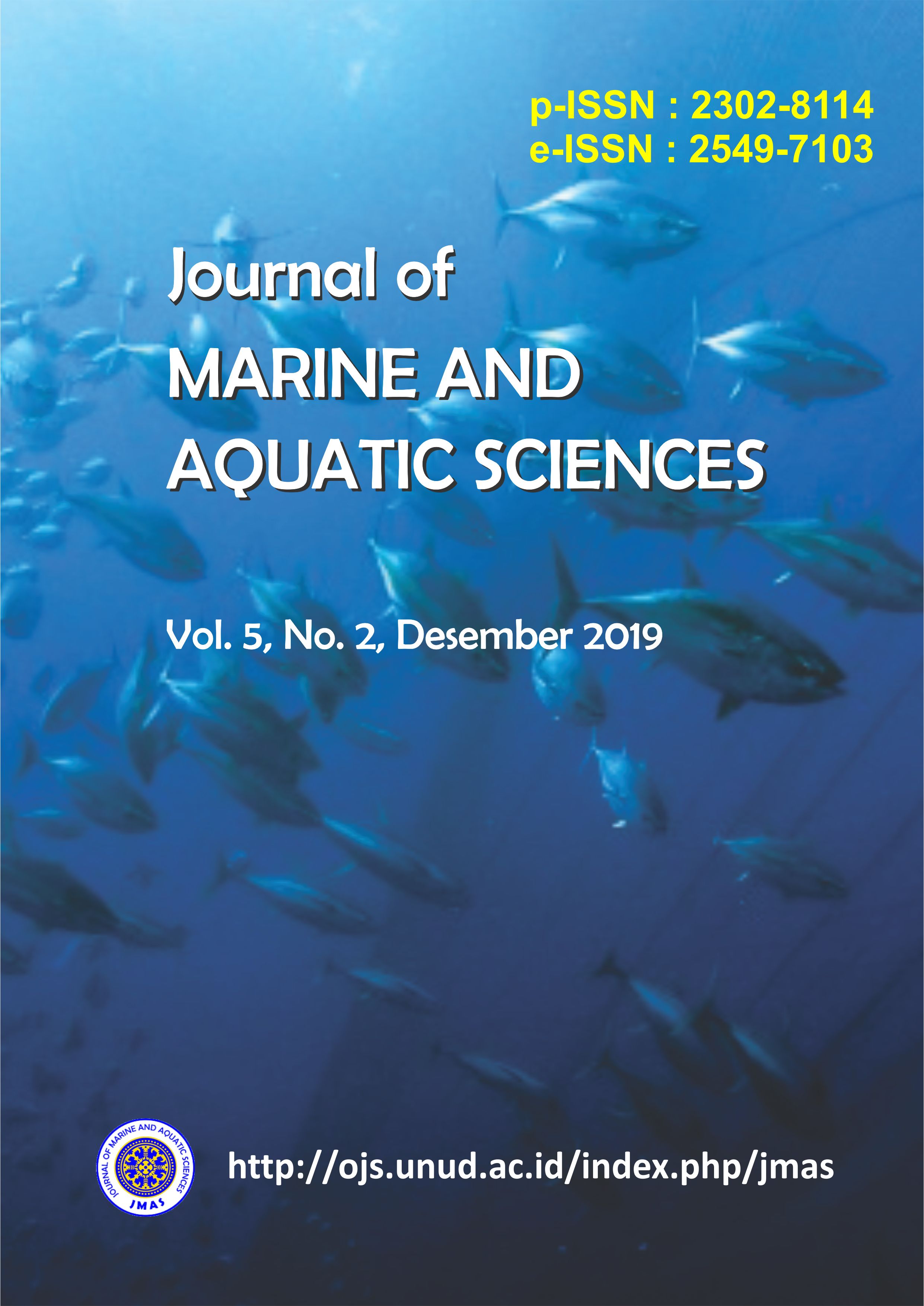Dekomposisi bahan organik pada sedimen di Tukad Mati dan Tukad Badung, Bali
Abstract
The sediment properties of Mati and Badung River, Bali were observed in this study. This study was aimed to know the relation between carbon, nitrogen and total bacterial number in the sediment of those rivers. This study was carried out in Mati and Badung River located in Southern part of Bali, Indonesia. Total carbon (TC), total nitrogen (TN), and total bacterial number of the sediment were observed in this study. Slow stirring method was used to estimate the total bacterial number in sediment, based on their environmental DNA intensity after agarose gel electrophoresis. TC of sediment was analyzed by using total carbon analyzer after combustion at 900oC, while TN was analyzed by using indophenol blue method after digested using Kjeldahl at 420oC for 1.5 hours. The result showed that TC of sediment in the Mati and Badung River were 6,100 and 7,000 mg/kg, respectively. TN of sediment in the Mati and Badung River were 380 and 440 mg/kg, respectively. The pH and electrical conductivity (EC) of sediment in the Mati River were 6,88 dan 0,10 µs/cm, while in the Badung River were 6,80 dan 0,11 µs/cm. Total bacterial number in the Mati river was lower (4.8 × 108 cell /g) than that in the Badung river (3.8 × 108 cell/g). The high value of R2 between total bacterial and TC (0.91), and between total bacterial number and TN (0.83), indicating the high influence of bacteria on the decomposition of organic materials in the sediment.
Downloads

This work is licensed under a Creative Commons Attribution 3.0 International License.
Copyright 2012 - 2023 Journal of Marine and Aquatic Sciences (JMAS)
Published by Fakultas Kelautan dan Perikanan Universitas Udayana, Denpasar, Bali, Indonesia
JMAS (p-ISSN 2302-8114; e-ISSN 2549-7103)


